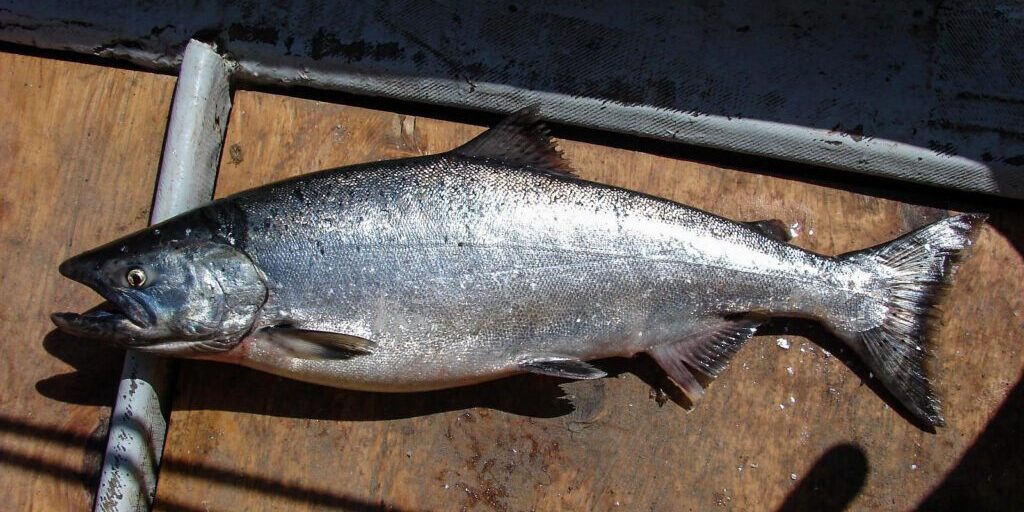The latest of several trawling vessels to come through Nome this summer is the Northwest Explorer. As it conducts a research survey in the Bering Sea, National Oceanic and Atmospheric Administration (NOAA) Fisheries scientists onboard the ship say they’ve seen signs that this year’s chinook salmon numbers are dwindling.
Jim Murphy is the survey lead for this surface trawl in the Northeastern Bering Sea, as well as a fisheries research biologist with the Alaska Fisheries Science Center, based out of Juneau.
“Yeah, we don’t see a large movement, because they still basically come out (of the Yukon River), take a left-hand turn, and go south. They (chinook salmon) could be further north, but I think it’s more likely this is going to be a low abundance year for chinook or kings.”
This Alaska Fisheries Science Center survey has been happening annually since 2002, and Murphy has been involved in almost every one.
According to Murphy, one of the concerns that drives this annual surface trawl survey is how the Bering Sea stock of chinook salmon has fared in the past.
“It’s been a big concern both for bycatch avoidance by the pollock fleet, but also the chinook salmon populations have crashed in the Yukon and the Norton Sound. So that has kind of been a big driver of continuing those surveys, developing tools that could actually be used by (fish) managers to anticipate run sizes in the future.”
Murphy and his research team study the chinook coming out of the mouth of the Yukon River as they mostly migrate south and southwest into the Norton Sound and Bering Sea.
While the researchers follow the fish, their survey route takes the crew from Dutch Harbor, along the Bering Sea shelf north until they reach Nome, and then back down to Dutch Harbor.
The research survey lasts a period of 25 days and goes by degrees of latitude, from 60 degrees north near Nunivak island up to 66 degrees, just north of Bering Strait.
Murphy says their trawl survey focuses on different depths of water than the bottom trawls that have already been done this summer in the Bering Sea.
“We study the pelagic, so that’s going to be salmon, herring… juvenile stages of pollock, and things like that, whereas they’re focused on adult assessments.”
Even though they have more than a week left in their survey time, Murphy says the surface trawl preliminarily has seen quite low numbers of juvenile chinook, which is not good for future salmon returns.
“We’re clearly seeing movement of Bristol Bay and Southern Bering Sea stocks that generally don’t come up this far north. We’re seeing a lot of them come up north. We’re still catching a lot of salmon: a lot of pinks, a lot of chum, lots of sockeye, and they’re growing very well. So, there’s no real evidence to suggest there’s a lack of prey for them.”
Murphy also points out that this is an unusual year with excessively warm water, so the fish may have been pushed further north due to higher water temperatures.
However, despite meager initial sightings, he says they can’t yet determine what their catches mean in terms of chinook salmon’s overall abundance.
Murphy and his team onboard the Northwest Explorer won’t know that for sure, though, until they finish trawling in the Bering Strait and Norton Sound later this month.
Image at top: A king (chinook) salmon. Photo: Flickr user Emma Forsberg; shared via Creative Commons license (CC BY 2.0).




